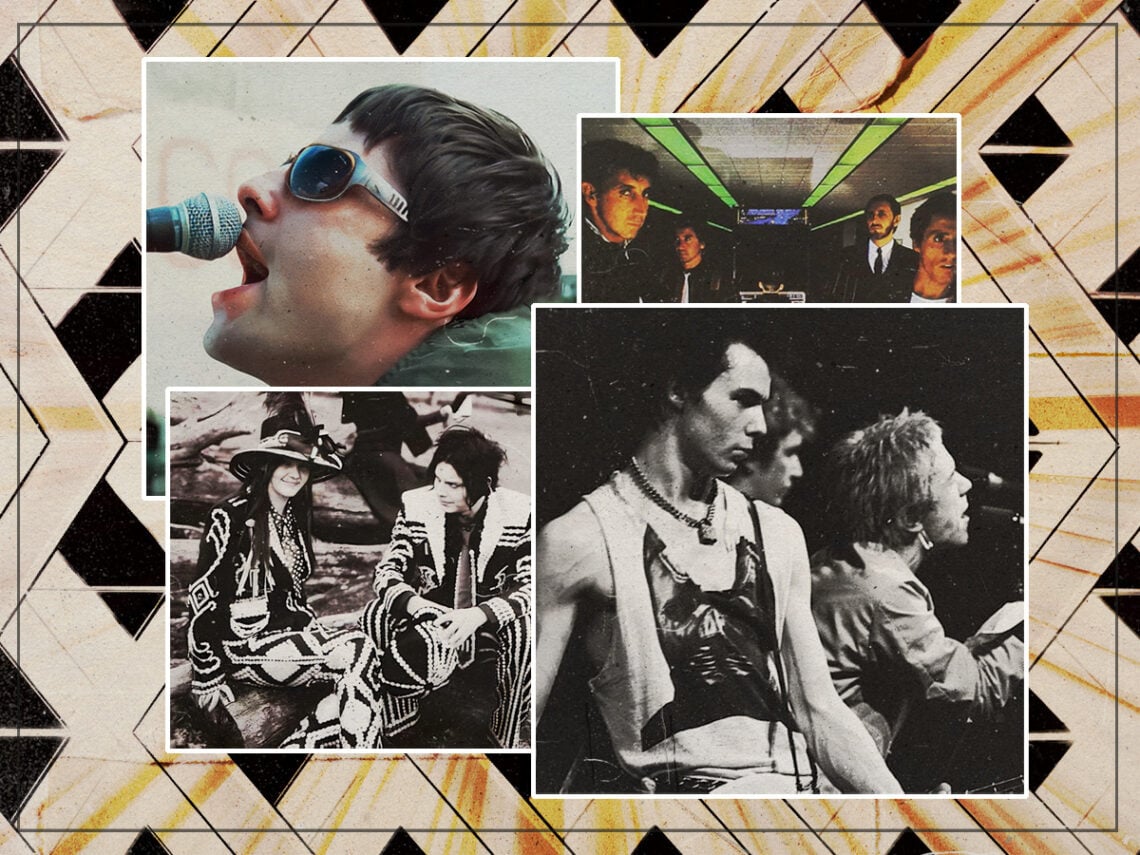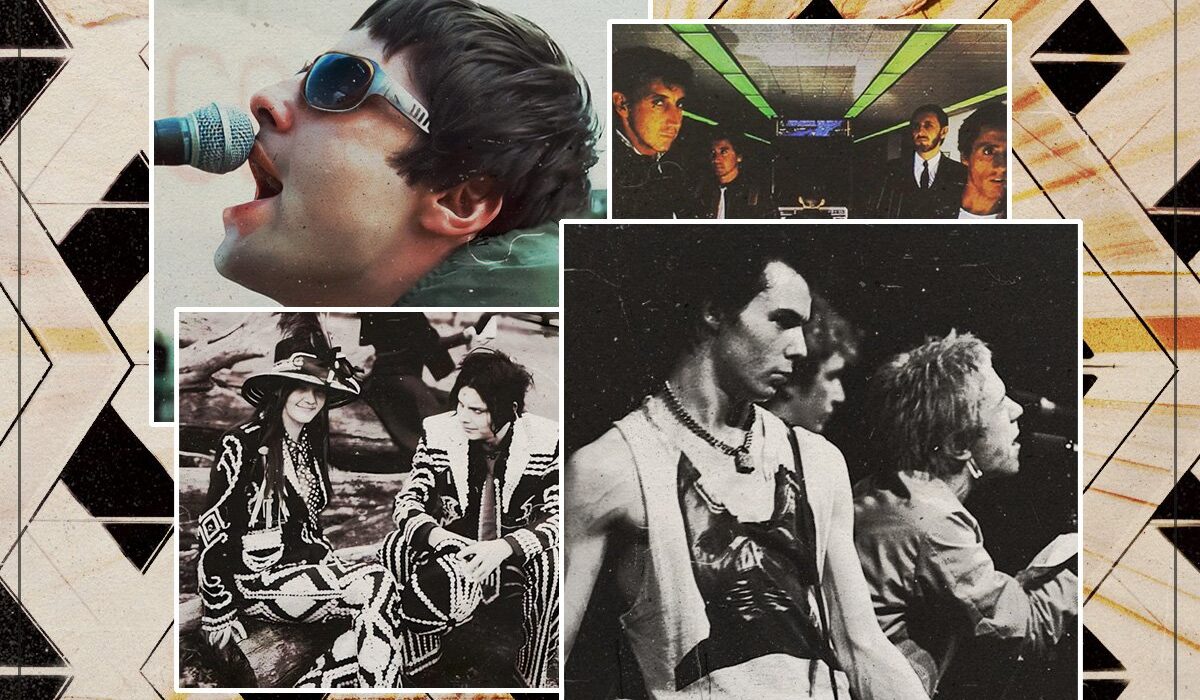
(Credits: Far Out / YouTube Still / Apple Music / Alamy)
Any album released by a major label usually tends to be a labour of love to get off the ground. Even though artists might be able to use different musical tools that aren’t available onstage, the best feeling is hearing one’s musical offspring being belted out by millions of people, each responding to the sounds of your musical heart. Although artists like Oasis and The Police may have had unforgettable moments in the studio, one of their albums was enough to derail the entire operation.
While the music may have been from the heart, not all of it was received well by the fans on first listen. Coming out to either lukewarm reviews or bile from the fanbase, many albums weren’t given the time of day, usually relegated to the bargain bins after only a few weeks on the shelves.
Then again, bands can get derailed over more than just their subpar music. For all of the great albums that appear on this list, there are just as many where the band fell apart behind the scenes, either having to rebrand with a completely different lineup or never landing another hit on the charts again.
Even though a handful of these albums tend to have great material, it didn’t matter for any artists in the long run. After reaching the highest peaks that any artist could ask for, the band fell from grace and had to start back at square one all over again. It might be fun at the top, but no one expected to fall this quickly.
10 albums that artists never recovered from:
10. Danger Days – My Chemical Romance
Not every career-killing album is meant to happen by accident. Throughout rock history, there have been artists who have made albums with the intent of making something that wouldn’t resonate with fans, only for them to recover from them as if nothing happened. While My Chemical Romance may have undergone a massive victory lap after the release of The Black Parade, the question hanging in the air was what the hell would happen next.
Looking to adapt a comic book idea he had been working on, Gerard Way’s vision for the group’s next album was putting the band’s gothic look into a futuristic neon filter, telling the story of the various Killjoys as they make their way through a dystopian future. Although the idea was a decent enough follow-up to their magnum opus, they came under fire by some for playing it too safe, especially with radio-friendly material on songs like ‘SING’.
Instead of crafting something that would follow it up, the band figured they had done all they could do together, electing to break up rather than have to continue playing the same kind of music for years on end. Considering their single ‘The Foundations of Decay’, though, perhaps there is still time left for My Chemical Romance to shock their fanbase with another trip into the sonic darkness.
9. It’s Hard – The Who
Every album The Who made was about expanding on what rock and roll was supposed to be. To stick out from the pack in the group’s early days, Pete Townshend was known for crafting lavish pieces that tended to go anywhere the song suited him, usually stretching the limits of the genre with various rock operas. While the band could tough it out despite tragedy, It’s Hard was the moment when that creative spirit started running out.
Although they had suffered a massive loss following the death of Keith Moon, bringing in substitute drummers on records like Face Dances led to the band powering through the early 1980s, even earning a late-career resurgence on ‘You Better You Bet’. Even though they were still working at total capacity, It’s Hard is the moment where Townshend felt like the creative well had stopped, making songs that felt more in line with what his contemporaries wanted than anything genuine.
One need only look at the introductory single for the album ‘Eminence Front’ as a good indication of how far the band had fallen. Even though the song may have been a phenomenal hit for the group, even Townshend told his fanbase that everything he was putting out around this time was the equivalent of rock and roll junk food, only to be forgotten as the next trendy band moved in.
8. Nevermind the Bollocks – Sex Pistols
Every single aspect of the Sex Pistols’ career was based on chaos. From their humble beginnings as nothing but punks who didn’t know the first thing about instruments to become rock legends, each part of the band’s career was about flying by the seat of their pants, not knowing where their career would go next. Since it was based on anarchy, who would have guessed their single studio release would have had a nasty fallout?
After recording Nevermind the Bollocks under dire conditions without a proper bass player, the band took to the road to deliver punk to the masses, eventually scoring a massive tour in the US to cause as much destruction as possible. While getting to the gigs, though, Sid Vicious had become a liability in every sense of the word, doping himself whenever he could and barely making it through the set without having some sort of incident happen onstage.
By the time the band licked their wounds on their way back to England, it was clear that their time was up, with John Lydon moving on to create PiL while the rest of the group moved on to their solo ventures. Even with the massive amount of chaos that they left in their wake, Nevermind the Bollocks remains a stirring piece of rock and roll history, capturing the cry of youth in a way that only a handful of other records have done since.
7. Second Coming – The Stone Roses
Sometimes, success can be just as disconcerting as failure. For all of the great songs that may turn up on a record, there’s always that lingering question about how the artist can follow it up. Many might try to knuckle down and create something even better, but The Stone Roses let others’ expectations get the better of them when they ventured into the studio the second time around.
Looking to capitalise off their career-defining debut album, the band thought the best answer would be to make something that was farther reaching than anything they had done before. While they may have tried expanding their craft on most of Second Coming, the songs weren’t there like they were the first time around, often caused by the tracks meandering for minutes on end without any clear path.
Their morale wasn’t much better, with drummer Reni walking out of the production halfway through and the rest of the band working with what they had during his absence. Even though The Stone Roses is the ultimate example of what Britpop would be years later, every listen to Second Coming is just another solemn reminder of what could have been had the band not become their own worst enemy.
6. Icky Thump – The White Stripes
Duo bands tend to always be on the verge of combustion. Although songwriting duos like Simon and Garfunkel or The Everly Brothers had their fair share of bright spots throughout their career, there’s only so much one can do without the other person that leaves them wanting to do more on their own. Even though Jack and Meg White had been woodshedding their bluesy foundations with The White Stripes, Icky Thump was when their searing garage rock started to hit a wall.
Compared to earlier records like Get Behind Me Satan, this was the next step in the group’s evolution. Having been toying with the sounds of other instruments, Jack’s adoption of weird sounds like the organ along with an array of effects pedal gave the album a sonic world of its own, especially when marrying together the organic and artificial sides of the group’s sound. Although Jack was having a great time, Meg slowly lost touch with her love for music.
Not liking the idea of having to tour worldwide again, Meg was the one who decided that The White Stripes would dissolve, only playing one more show with Jack hosted by Conan O’Brien before taking her final bows. Even though Jack has been able to make subtle changes to his usual formula in his solo career, many of his greatest moments solo are still indebted to what he already achieved on Icky Thump.
5. Van Halen III – Van Halen
By the end of 1985, it looked like Van Halen was indestructible. Although the loss of David Lee Roth would have been enough to destroy any band’s career, their decision to move on with Sammy Hagar behind the microphone saw them back on top all over again. While Hagar was around for the same length as Roth, Van Halen never pulled off the lead singer hat trick when Gary Cherone was brought in.
After Hagar’s public spat with the band, Cherone signed on from Extreme to turn Van Halen back into a rock and roll force to be reckoned with. Instead of being able to flex his chops, though, most of Van Halen III sees the band fumbling around trying to find the right kind of sound that suits them, often stretching songs out for so long that they are borderline incoherent.
Towards the end of the album, Eddie figured that he didn’t even need Cherone, either, taking the lead vocals on the song ‘How Many Say I’ before bringing the album to a mournful close. Despite the band having well-received tours with both Roth and Hagar since the release of Van Halen III, the group dynamic never managed to spit out another record of quality material ever again.
4. Synchronicity – The Police
Part of the appeal of The Police was always centred around the tension that took place every time they got into the studio. While Sting may have been known as the melodic wizard who created amazing songs in the studio, it was always up to all three members to hold down their end of the band, lest the whole thing collapse. Even though the rest of the members were more than happy to play along to whatever songs Sting had been working on, Synchronicity was the moment where they began to run out of steam.
When looking at the track listing, though, you would swear that the band were on the cusp of the best music of their career. Throughout singles like ‘Synchronicity II’ and ‘King of Pain’, Sting was writing songs that perfectly blended the complex and radio-friendly sides of their sound, all while delivering brilliant pop tracks like ‘Every Breath You Take’. All the while, the other members were slowly losing interest in cowering to Sting’s demands.
Not wanting to have the same disagreements about how the snare drum should sound or what kind of songs made it onto the record, the band decided to call it a day at the height of their powers, electing to do their solo projects and only reunite now and again. The Police already had enough phenomenal pieces established in their repertoire, so it was only natural for them to quit while they were ahead.
3. The Long Run – Eagles
Every album of the Eagles’ career seemed to be building towards something big. As the band started to notch up more hits on the charts, both Glenn Frey and Don Henley wanted to create the kind of album that would go down in history as one of the greatest artistic statements of their generation. While they fulfilled their dreams with Hotel California, there was no roadmap of what to do next.
After coming off the road and back into the studio, none of the members had any songs completed, leading to most of The Long Run being completed in the studio. Outside of the perfection, the band were off their heads on cocaine, which led to many sessions grinding to a halt as they tried to figure out where the songs were supposed to go.
Considering their fractured state, songs like the title track and newcomer Timothy B Schmidt’s ‘I Can’t Tell You Why’ would turn into the final hits the band ever had, touring until their infamous fight onstage during a charity gig. The Eagles may have had their trademark sound down to a science, but even after reassembling the group for Hell Freezes Over, they would be burnt out on writing new material for decades.
2. Use Your Illusion – Guns N’ Roses
The fact that the members of Guns N’ Roses are all still standing today is a miracle. Considering the excessive behaviour they got up to during their 1980s prime, most of them are lucky even to see the light of day, living like modern outlaws whenever they took to the road. While Appetite for Destruction remained the ultimate diary of what life at the top felt like, Axl Rose felt that it was necessary to try to dream even bigger.
Rose thought they needed to bury what they had already made for the band’s next handful of songs, creating a double album of new material that showed off the eclectic side of their catalogue. While Use Your Illusion would sell in droves and become one of the most celebrated releases in hard rock history, the ensuing tour for the record gave the band a death sentence without even knowing it.
After Izzy Stradlin left the fold and drummer Steven Adler was let go, most of the members soldiered through every show on the tour, all while having to deal with Rose’s antics onstage and often leaving the audience hanging when he refused to show up. By the time the group got back to Los Angeles, though, any hope for them recording another album wasn’t in the cards, with Slash and Duff McKagan leaving the form their projects. While Rose still held onto the rights to use the name Guns N’ Roses, any semblance of ‘The World’s Most Dangerous Band’ died along the way.
1. Be Here Now – Oasis
Trying to chase success can often be the enemy of creativity. While it might be fun trying to make something that will resonate with fans worldwide, writing to satisfy executives instead of yourself tends to leave the audience feeling cheated by their idols. Even though Noel Gallagher seemed to have a grand plan of where Oasis would go after What’s the Story Morning Glory, Be Here Now was the equivalent of the band shoving all that goodwill up their noses.
Throughout the recording of the album, both the band and producer Owen Morris were out of their minds on cocaine, usually spending days trying to layer as many guitars on top of each other to get the right take. To make an album even more extensive than their predecessors, their decision to take up every track on two tape machines made for white noise in some of the backing tracks, leading to what could have been decent tracks falling flat.
While Oasis would ultimately survive for another decade in the limelight, it was clear that their creative spirit had started to change, with Noel having a different outlook on his music and not claiming to be a part of the biggest band in the world nearly as often. Be Here Now may not be nearly as bad as many have made it out to be, but as soon as those final footsteps appeared on the final album, it was clear that the band’s golden age was behind them.







